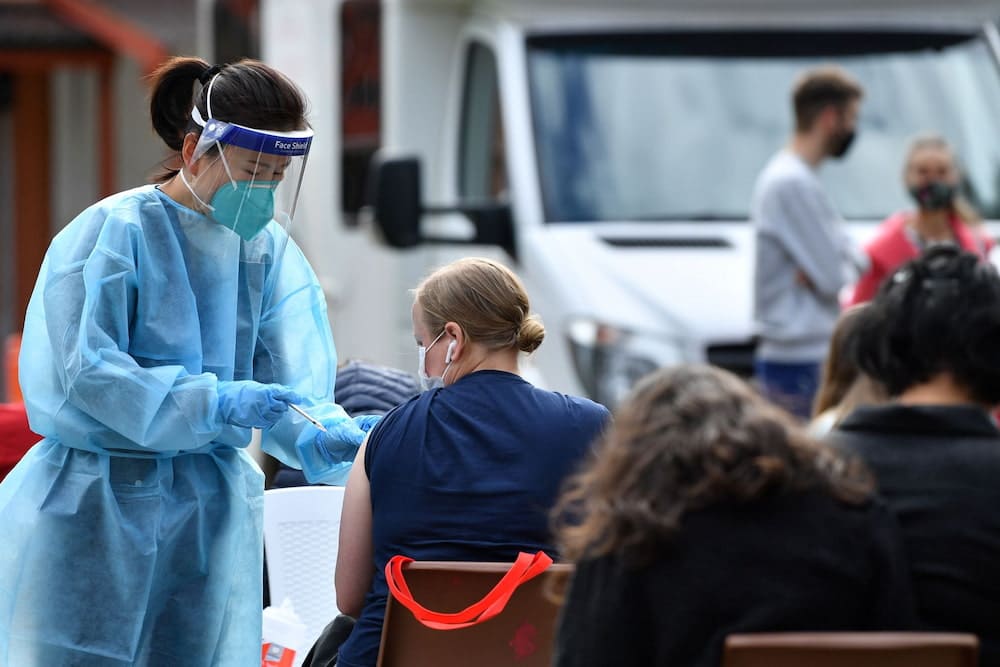Public health orders requiring NSW health workers, teachers and some construction workers to be vaccinated to keep working are valid, the NSW Supreme Court has ruled.
Sydney construction worker Al-Munir Kassam, Byron Bay aged care worker Natasha Henry and eight others had argued the public health orders should be overturned as it impinged on various rights including a right to bodily integrity and a right to freedom of movement.
But Justice Robert Beech-Jones said arguing the health order impinged on rights was of little assistance when abrogation was the very thing the legislation sets out to achieve.
When all was said and done, the public health orders in question restricted freedom of movement.
“So far as the right to bodily integrity is concerned, it is not violated as the impugned orders do not authorise the involuntary vaccination of anyone,” he said.
“So far as the impairment of freedom of movement is concerned, the degree of impairment differs depending on whether a person is vaccinated or unvaccinated.
“Curtailing the free movement of persons including their movement to and at work are the very type of restrictions that the Public Health Act clearly authorises.”
He also dismissed claims Health Minister Brad Hazzard acted outside his powers, by not asking the right questions or failing to take into account relevant considerations.
The case was the first in a series across Australia challenging various limitations on unvaccinated people.
The court’s decision deals a blow to another NSW case to be heard in November, involving paramedic and regional deputy mayor John Larter.
The case also heralded a new era for Australian courts, with streams of the case’s hearings being watched 1.4 million times on YouTube.
Most of those views occurred during the hearing itself, with the audience peaking at 58,000 during a directions hearing.
More than 20,000 tuned in on Friday.
“The Court’s use of YouTube to accommodate the increased public interest in these cases is indicative of the Court’s principle of open justice,” a spokeswoman told AAP.
The Federal Court has also turned to streaming public interest cases during the COVID-19 pandemic, including Christian Porter’s defamation fight and the related Jo Dyer v Sue Chrysanthou case.
Each peaked at more than 2000 viewers while about 900 turned into a hearing involving Ben Roberts-Smith.
Professor Rick Sarre said broadcasting court proceedings went back as far as the coronial findings into the death of Azaria Chamberlain in 1981.
But concern about preserving evidence, lawyers playing to camera and the work involved in setting up a courtroom for broadcasting has held all but a few cases.
The University of South Australia adjunct professor of law can’t see jury trials being streamed but suggests judicial explanations for sentencing would be far better off broadcast
“The idea is it will happen a lot more but judges will be more particular about what they will subject to that,” he told AAP.
“Leave it in the hands of the judge and he or she will be in the best position to make call.”
Public faith in the administration of justice requires that justice must not only be done, but it must also be seen to be done, Law Council of Australia president Jacoba Brasch QC said.
“The Courts’ willingness and adaptability to shift online during COVID has not only enabled Australians to continue to access justice during this time, but made it possible for more members of our community to observe our legal system in action if they so wish,” Dr Brasch told AAP.
However, she said the shift did create potential challenges that must be managed, such as ensuring people do not record the proceedings.
AAP
Get all the latest Canberra news, sport, entertainment, lifestyle, competitions and more delivered straight to your inbox with the Canberra Daily Daily Newsletter. Sign up here.



